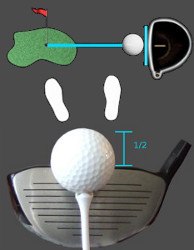1 of 5 | Next >
Golf Driving, How To Get Off the Tee Properly

If you took a poll of all of the golfers at your local course next weekend and asked them which club in the bag was their favorite, there would likely be a clear winner – the driver. Most golfers love to hit the driver because it goes the farthest, but also because it can actually be the easiest club in the bag to hit once you understand the proper technique. Even for players who struggle to hit their driver straight most of the time, there are usually at least one or two great drives during the round that offer excitement and satisfaction. The feeling of hitting a driver right on the sweet spot and watching the ball sail down the fairway is one that is rarely matched on the golf course.
Obviously, hitting your driver well once or twice during the round isn’t going to be enough to get the job done. If you have hopes of playing better golf and lowering your scores over time, you will need to become consistent in your performance with this important club. While not all tee shots have to be hit with the driver, you will likely use yours between 8 and 12 times per round. With that many driver shots in a given round, you are going to want to have a good understanding of the proper golf driver swing. Driver swing tips are slightly different than those that you would use throughout the rest of the bag, so take the time to learn how to hit a golf driver and you will be rewarded with improved overall play.
You might think that hitting a driver is just like hitting any other club in your bag, and that you can use the same swing for each and every one of your clubs. That would be a mistake. In fact, hitting a driver is different than hitting your irons, and you need to make certain adjustments to hit quality shots time after time. There are a couple reasons that your swing must adjust between hitting woods and irons –
The correct golf driver swing plane is different than the correct swing plane with your irons. That means, basically, that you need to have two different golf swings that you can make throughout a round – one with your driver and fairway woods, and one with your irons, While they will share many common characteristics, there are a few differentiating factors that are important to understand.






